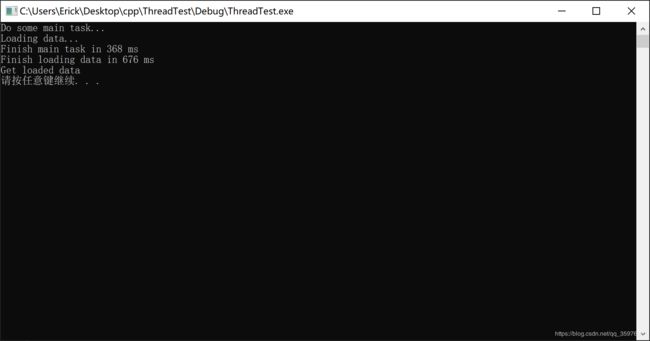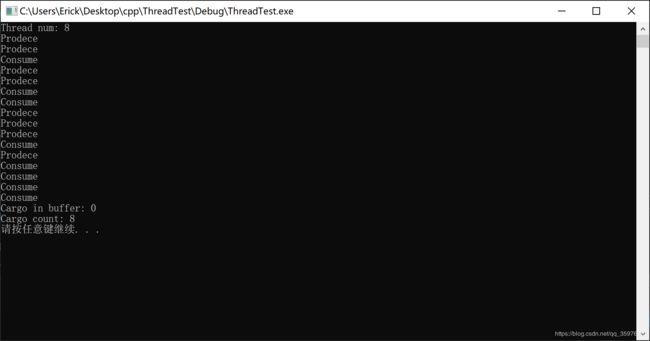C++11多线程---互斥量、锁、条件变量的总结
关于互斥量std::mutex的总结
互斥量用于组成代码的临界区。C++的多线程模型是基于内存的,或者说是基于代码片段的,这和我们操作系统学习的临界区概念基本一致,但是与Golang不同,Golang是基于消息模型的。
一个std::mutex的lock()和unlock()之间的代码片段组成一个临界区,这个临界区内部同时最多只能有一个线程进行访问,可以理解为这个片段内部的代码是受到保护的,不会被多线程同时访问造成不可预知的问题。
std::mutex mtx;
mtx.lock();
// 这里的代码,同时最多只能有一个线程进行访问
mtx.unlokc();
当一个线程获取到一个std::mutex并且调用lock()后,必须由同一个线程调用unlock()操作,因此一定要注意两个函数成对出现,否则会造成死锁。
当一个线程获取一个std::mutex并调用lock()函数后,其他线程的调用会失败。可以使用try_lock进行判别,具体细节参考:https://en.cppreference.com/w/cpp/thread/mutex
关于std::lock_guard和std::unique_lock的总结
std::lock_guard比较好理解,因为调用mutex需要时刻记着解锁,所用这个类封装了一系列的操作,在一个模块中构造了一个std::lock_guard后,相当于对该结构块加锁,当线程离开结构块后,std::lock_guard自动析构,相当于解锁。它的结构简单、速度快,但是功能比较少。
std::unique_lock是对std::lock_guard功能的一个拓展,功能更多,但是速度会慢一些,具体参照:https://en.cppreference.com/w/cpp/thread/unique_lock
关于条件变量std::condition_variable的总结
这个相当于操作系统中的wait和signal原语操作,需要结合一个std::unique_lock组成的临界区共同完成功能。wait & signal原语操作最典型的特点是 “阻塞自己,唤醒别人”。可以这么理解,如果当前满足特定条件不满足,那么就不能进入临界区,当前线程阻塞。当其他线程处理完后,使得条件满足了,线程会唤醒那些处于阻塞状态的线程,使之重新进入。直接通过下面的代码来说明,经典的生产者和消费者问题。
注意只有一个互斥量的时候,唤醒顺序的问题,参照官网:https://en.cppreference.com/w/cpp/thread/condition_variable
在这里给出一个更加简洁的例子:
void worker_thread()
{
// Wait until main() sends data
std::unique_lock<std::mutex> lk(m);
cv.wait(lk, pred});
// 这里执行工作代码,注意下面两个语句的顺序
lk.unlock();
cv.notify_one();
}
上述代码中,先执行lk.unlock(),说明当前线程放弃对临界区的所有权,此时再调用notify_one会唤醒其他线程来对临界区执行操作。如果先唤醒其他线程,则可能unlock未执行完毕,就有线程到临界区了,此时新来的线程又会阻塞了。
代码示例
下面代码总共是3个例子。第一个Application是模拟一个事件处理系统的,但是没有使用条件变量,自己实现了一下,第二个Application使用了条件变量。第三个ProduceAndConsume是典型的生产者和消费者模型。
未使用条件变量,仅仅借助循环的加载数据应用
#include 使用了条件变量的加载数据应用
#include 生产者和消费者模型
#include 

